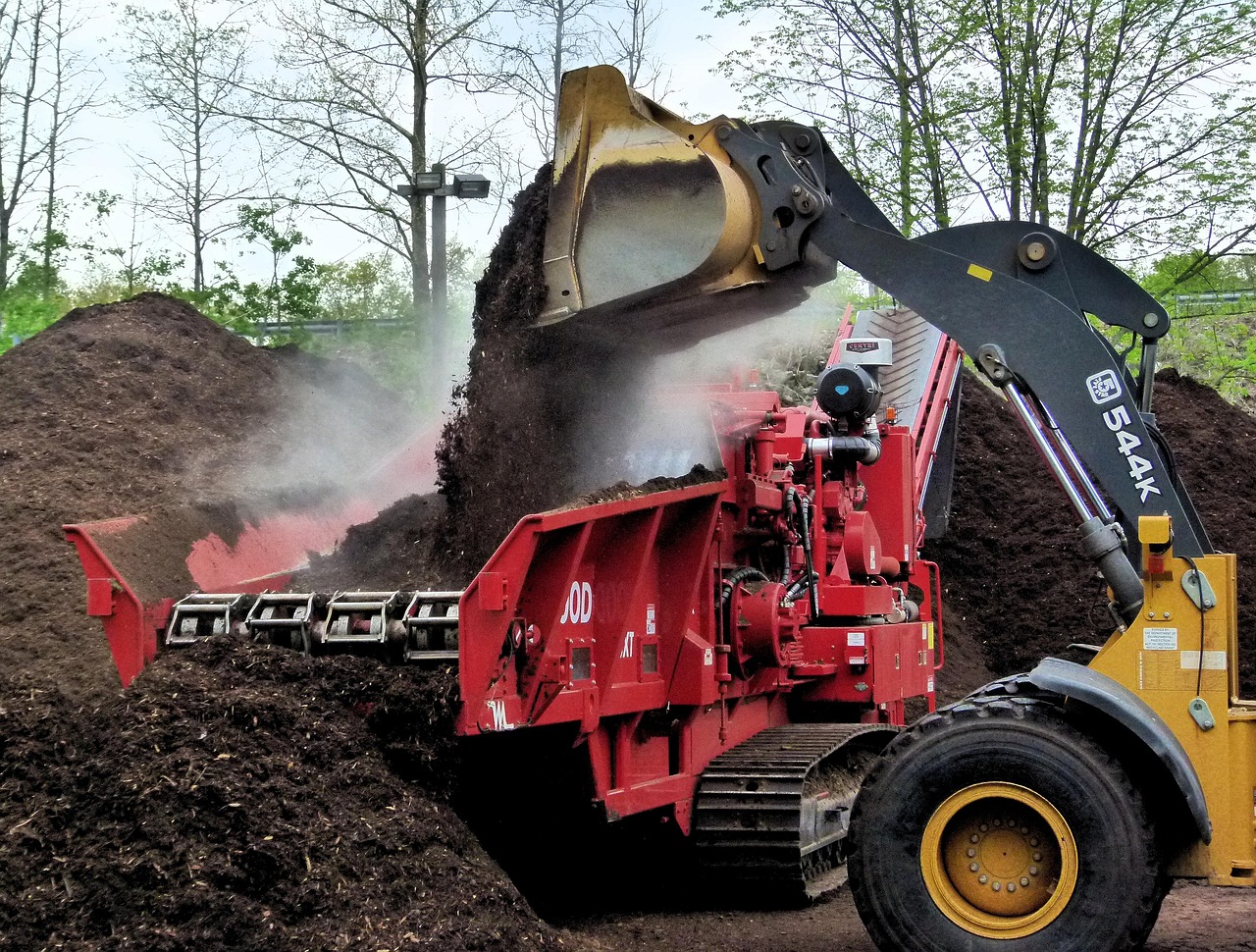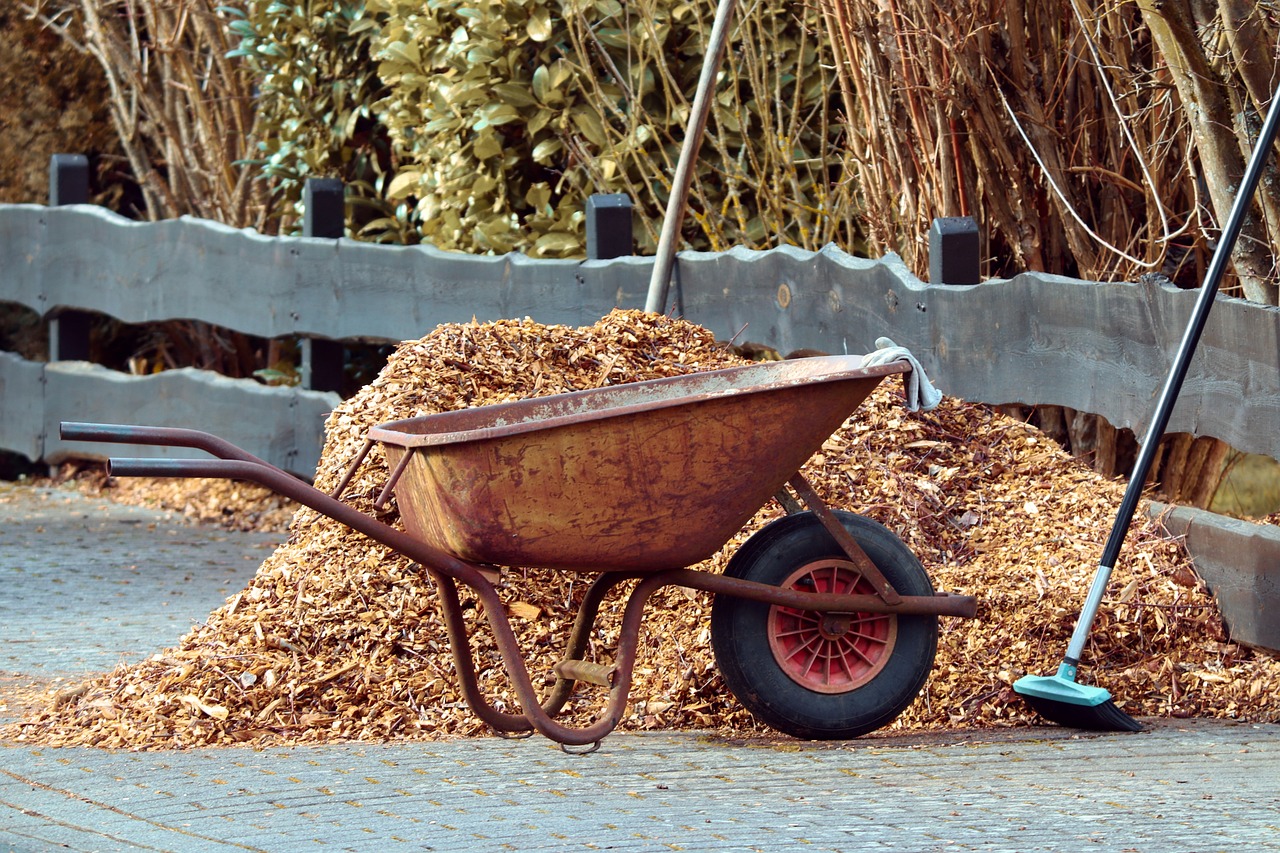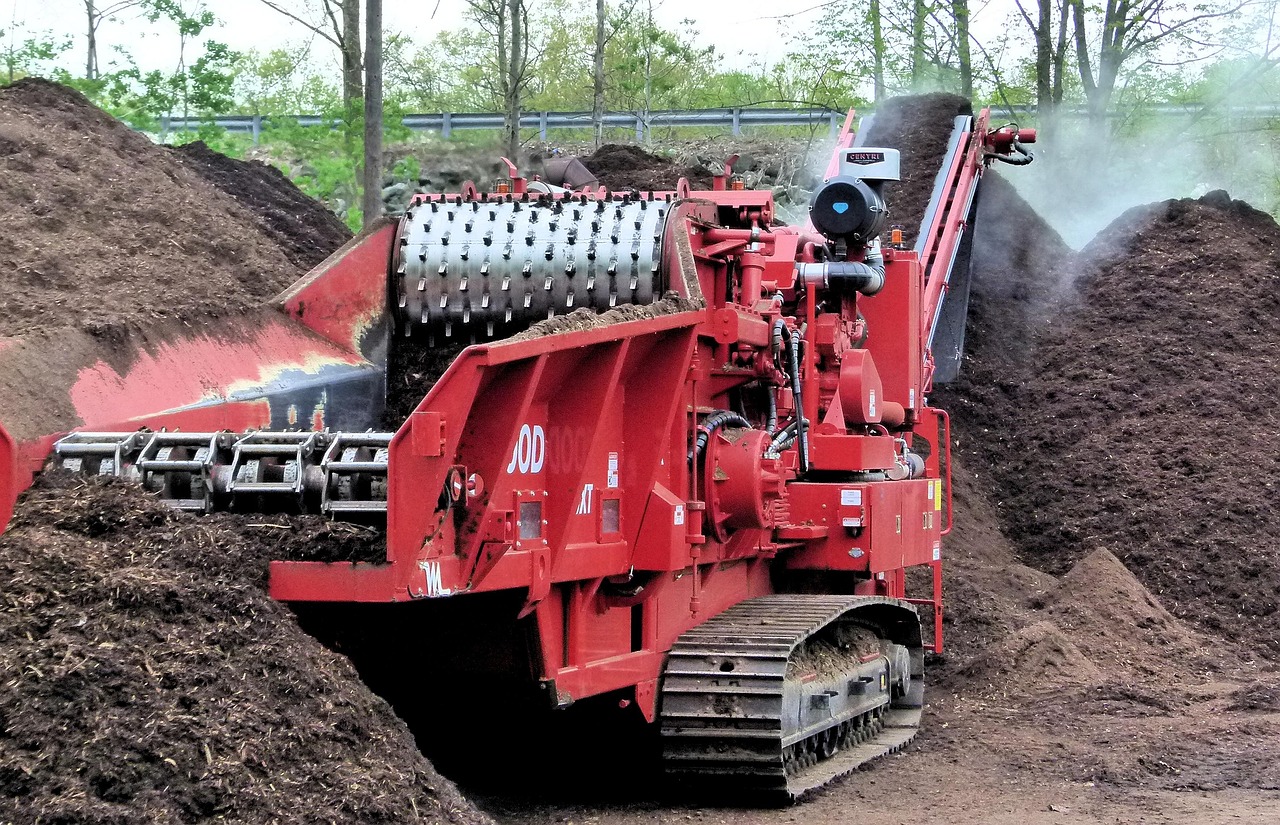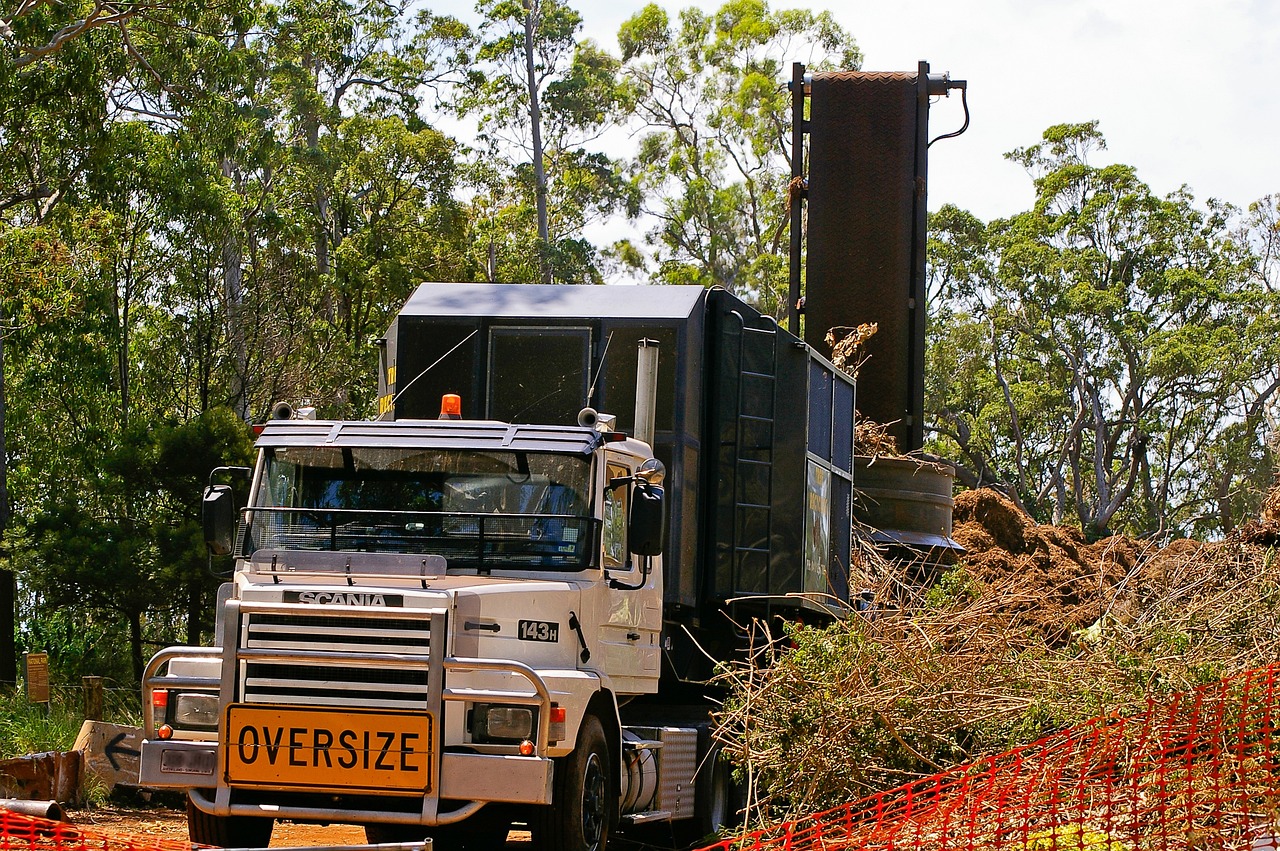Applying mulch after tree pruning helps retain soil moisture, suppress weeds, and improve soil health. It also provides a protective layer for tree roots, reducing temperature fluctuations and promoting overall tree vigor.
Tree pruning is an essential maintenance practice that enhances the health and appearance of trees. After pruning, the landscape can look bare, making mulch application a vital step in the tree care process. Mulch serves multiple purposes, making it an invaluable addition to your gardening routine. This article will explore the benefits of mulch application following tree pruning and provide guidance on how to effectively apply it.

Mulch is material spread over the soil surface to conserve moisture, improve fertility, and enhance the visual appeal of gardens and landscapes. It can be organic, such as wood chips, bark, and straw, or inorganic, like gravel and rubber. Each type has its unique benefits, but organic mulch is particularly beneficial after tree pruning because it breaks down over time, enriching the soil.
Benefits of Mulching After Tree Pruning
Applying mulch after pruning offers several advantages that contribute to the long-term health of your trees. Here are some key benefits:
- Moisture Retention: Mulch helps maintain soil moisture by reducing evaporation. This is crucial after pruning since trees may require additional water to recover from the stress of cutting.
- Weed Suppression: A layer of mulch inhibits weed growth by blocking sunlight. Fewer weeds mean less competition for nutrients and water, allowing pruned trees to thrive.
- Soil Temperature Regulation: Mulch acts as an insulator, keeping soil temperatures consistent. This is especially important during temperature fluctuations in spring and fall.
- Improved Soil Health: Organic mulch decomposes over time, adding nutrients back into the soil. This process enhances soil structure and promotes beneficial microorganisms.
- Aesthetic Appeal: Mulch provides a clean, finished look to garden beds. It enhances the landscape while serving practical purposes.
Understanding the types of mulch available can help you choose the right one for your needs. Below is a comparison of common organic and inorganic mulches:

| Type of Mulch | Description | Benefits |
|---|---|---|
| Wood Chips | Shredded pieces of wood from trees or shrubs. | Long-lasting, effective at suppressing weeds. |
| Bark Mulch | Shredded or chipped bark from trees. | Decomposes slowly, retains moisture well. |
| Straw | Dried stalks from cereal crops. | Lightweight, inexpensive, excellent for quick coverage. |
| Pine Needles | Dropped needles from pine trees. | Acidic properties beneficial for acid-loving plants. |
| Gravel | Small stones used as mulch. | Long-lasting but does not enrich soil. |
The timing of mulch application is crucial for maximizing its benefits. After pruning, allow a few days for any wounds on the tree to callous over before applying mulch. This helps prevent moisture retention around fresh cuts, which can lead to rot or disease.
When applying mulch, aim for a depth of two to four inches around the base of the tree. Avoid piling mulch directly against the trunk as this can cause bark decay and attract pests. Instead, create a donut shape with mulch that extends outwards from the trunk and covers the root zone.
Regular maintenance of your mulch layer is also essential. As mulch decomposes, it will need to be replenished to maintain its benefits. Check your mulch layer annually and add new material as needed to keep it at the appropriate depth for optimal performance.

In summary, mulching after tree pruning is a beneficial practice that supports tree health and enhances landscape aesthetics. By understanding the types of mulch available and applying it correctly, you can ensure your trees recover well from pruning and continue to thrive in your garden.
Choosing the Right Mulch for Your Trees
Selecting the right type of mulch is crucial for achieving the best results after tree pruning. Different types of mulch offer various benefits, and picking the most appropriate one can significantly influence tree health and soil quality. Below are some factors to consider when choosing mulch.
Organic vs. Inorganic Mulch
Understanding the differences between organic and inorganic mulch can help you make an informed decision:
- Organic Mulch: Composed of natural materials, organic mulches decompose over time, enriching the soil. Examples include wood chips, straw, bark, and grass clippings. They improve soil structure and support beneficial microorganisms.
- Inorganic Mulch: Made from synthetic materials or minerals, inorganic mulches such as gravel or rubber do not provide any nutrients to the soil. They are long-lasting but do not improve soil health.
Considerations for Mulch Selection
When selecting mulch, consider the following factors:

- Tree Species: Different trees have varying needs. Research which mulch type best suits your tree species.
- Local Climate: In hot climates, organic mulches may decompose faster and require more frequent replacement compared to cooler areas.
- Aesthetic Preferences: Choose a mulch that complements your landscape design. For example, colored mulch can enhance visual appeal.
- Availability: Select mulch that is easily accessible in your area. This can save both time and costs.
How to Apply Mulch Effectively
The process of applying mulch may seem simple, but there are specific steps to follow for optimal results. Proper application not only enhances visual appeal but also maximizes the benefits to your trees.
Tools and Materials Needed
Before starting, gather the necessary tools and materials:
- Mulch Material: Choose your preferred type of mulch based on previous selections.
- Rake: A garden rake helps spread the mulch evenly.
- Shovel or Pitchfork: Useful for transporting mulch to the desired location.
- Gloves: Protect your hands while handling mulch.
- Water Source: It may be beneficial to wet the mulch slightly before application to reduce dust.
Steps for Applying Mulch
Follow these steps for effective mulch application:
- Prepare the Area: Clear away any weeds, old mulch, or debris from around the tree base. This ensures that the new mulch will be effective.
- Create a Donut Shape: Form a circular ring of mulch around the tree, leaving space around the trunk. This prevents moisture accumulation against the bark.
- Apply the Mulch: Spread a layer of mulch that is two to four inches thick. Ensure even distribution for maximum coverage.
- Water the Mulch: Lightly water the newly applied mulch to help it settle and minimize dust.
Mulch Maintenance Tips
Maintaining your mulch layer is essential to ensure its effectiveness over time. Here are some tips to help you keep your mulch in top condition:
- Inspect Regularly: Check your mulch layer periodically for signs of decomposition or compaction. Replace any areas that appear thin or worn out.
- Avoid Over-Mulching: Adding too much mulch can suffocate tree roots and create issues with moisture retention. Stick to the recommended depth.
- Add Fresh Mulch Annually: Replenishing your mulch each year keeps it fresh and effective. Remove any old or decomposed material before adding new mulch.
- Monitor for Pests: Keep an eye out for insects or rodents that may take up residence in your mulch. If noticed, consider adjusting your mulch type or applying pest deterrents.
Pest Control Considerations
Pests can sometimes be attracted to certain types of mulch. Understanding how to manage pests while maintaining healthy mulch layers is essential for tree health.
Certain organic mulches, such as straw, can attract pests like rodents or slugs. To mitigate this risk, consider using a combination of organic and inorganic mulches or applying pest deterrents around the base of the tree.
It is also beneficial to monitor your trees regularly for any signs of pest infestation. Early detection allows for more effective treatment options, ensuring that your trees remain healthy and vibrant.
Environmental Impact of Mulching
Applying mulch not only benefits individual trees but also plays a significant role in supporting the broader environment. Understanding the ecological advantages of mulching can help gardeners and landscapers make informed choices that benefit both their plants and the planet.
Soil Health Improvement
One of the most significant environmental impacts of mulching is its effect on soil health. Mulch enhances soil quality in several ways:
- Soil Structure: Organic mulch decomposes over time, adding organic matter to the soil. This improves soil structure, making it more porous and allowing better water infiltration.
- Nutrient Availability: As organic mulch breaks down, it releases essential nutrients back into the soil, promoting plant growth and health.
- Microbial Activity: Healthy soil contains various microorganisms that are vital for nutrient cycling. Mulch provides a habitat for these beneficial organisms, enhancing soil biodiversity.
Water Conservation
Mulch plays a crucial role in conserving water, particularly in regions where water availability is a concern. Here are some advantages related to water conservation:
- Evaporation Reduction: By covering the soil, mulch reduces evaporation rates, allowing more water to remain in the soil for tree roots to access.
- Stormwater Management: Mulch helps manage stormwater runoff by slowing down water flow and promoting absorption into the ground.
- Soil Moisture Retention: Maintaining consistent moisture levels in the soil is vital for tree health, especially during dry spells.
Mulching and Wildlife Support
Creating a healthy ecosystem around your trees can promote biodiversity and support local wildlife. Proper mulching practices can contribute positively to this goal.
Habitat Creation
The layer of mulch provides an ideal habitat for various organisms:
- Beneficial Insects: Many insects, such as ladybugs and earthworms, thrive in mulched environments. They play crucial roles in pest control and soil aeration.
- Small Mammals: Mulch can provide shelter for small mammals like rabbits and hedgehogs, which are part of a healthy ecosystem.
- Birds: Birds may forage in mulched areas for insects and seeds, helping to control insect populations while also benefiting from the habitat provided.
Pollinator Support
Healthy ecosystems support pollinators such as bees and butterflies. By choosing mulch wisely, you can enhance pollinator habitats:
- Native Plants: When mulching around native plants, you create environments that attract local pollinators. Native plants often coexist with mulch types that complement their growth.
- Flowering Mulches: Consider using flowering ground covers or organic materials that support pollinators when mulching garden beds.
Common Myths About Mulching
Misinformation about mulching can lead to poor practices and ineffective results. Understanding and debunking common myths about mulching is essential for successful tree care.
Myth 1: All Mulches Are Created Equal
This myth implies that any material can be used as mulch without considering its effects. Different types of mulch have varying properties that affect soil health, moisture retention, and pest attraction. It is essential to choose the right type based on your specific needs.
Myth 2: Mulch Should Be Piled Against Tree Trunks
Piling mulch against the trunk can create moisture problems and attract pests. Proper application involves creating a donut shape around the tree base to allow airflow and prevent rot.
Myth 3: Mulch Does Not Need Maintenance
While mulch provides numerous benefits, it requires regular maintenance to be effective. Decomposing mulch should be replenished annually, and the layer should be inspected for compactness and pest presence.
Choosing Between Different Types of Organic Mulch
The choice of organic mulch can significantly affect your gardening efforts. Each type has distinct benefits and considerations that should guide your selection.
| Type of Organic Mulch | Description | Benefits | Considerations |
|---|---|---|---|
| Bark Mulch | Shredded bark from trees, commonly pine or cedar. | Long-lasting, effective at suppressing weeds. | Might not decompose quickly; check for pest attraction. |
| Wood Chips | Chips from various hardwoods or softwoods. | Improves soil structure as it decomposes; aesthetic appeal. | Can attract pests if too thick or moist. |
| Straw | Dried straw from cereal crops, lightweight material. | Easily spreadable; great for quick coverage. | Decomposes quickly; may attract rodents. |
| Pine Needles | Dropped needles from pine trees. | Acidic properties beneficial for acid-loving plants. | Might need replenishing more often in lower pH soils. |
Understanding these factors will help you make knowledgeable decisions regarding mulching after tree pruning, leading to healthier trees and a thriving garden ecosystem.
Additional Considerations for Mulch Application
When applying mulch after tree pruning, there are several additional considerations to keep in mind that can enhance the benefits of your mulching efforts. These factors can help ensure that your trees remain healthy and vibrant for years to come.
Timing of Mulch Application
The timing of when you apply mulch can significantly affect its effectiveness. Generally, it is best to apply mulch in early spring or fall. During these times, the soil temperature is moderate, which allows for better moisture retention and encourages root growth.
- Spring Application: Applying mulch in early spring helps to retain moisture as the weather warms up and supports new growth after pruning.
- Fall Application: A layer of mulch applied in the fall protects roots from freezing temperatures and helps maintain a stable soil environment during winter.
Mulching Around Young Trees
Young trees benefit significantly from proper mulching techniques. When mulching around young trees, consider the following tips:
- Use Lighter Mulch: Choose a lighter mulch type to avoid smothering young roots.
- Keep Away From Trunk: Ensure that mulch is kept away from the trunk to prevent moisture buildup and potential rot.
- Monitor Growth: Regularly check young trees for signs of stress or disease, especially after pruning and mulching.
Mulch and Soil Amendments
In addition to mulch, incorporating soil amendments can enhance the health of your trees. Here are some amendments to consider:
- Compost: Adding compost before applying mulch enriches the soil with nutrients and improves microbial activity.
- Organic Fertilizers: Organic fertilizers can provide necessary nutrients, especially for newly pruned trees that may be stressed.
- Soil Test: Conducting a soil test before amendments can identify specific nutrient needs and pH levels.
Final Thoughts
In conclusion, mulching after tree pruning is a vital practice that supports tree health, enhances soil quality, and promotes a thriving garden ecosystem. By understanding the various types of mulch, their benefits, and best practices for application, you can create an optimal environment for your trees to flourish. Remember to select the right mulch based on your specific needs, apply it correctly, and maintain it regularly to maximize its effectiveness.
As you embark on your mulching journey, keep in mind that every tree and garden is unique. Adapt your mulching strategies to suit individual conditions, including climate, soil type, and tree species. With thoughtful considerations and proper techniques, you can ensure that your trees recover well from pruning and continue to thrive in a healthy landscape.
The benefits of mulching extend beyond individual trees; they contribute to the overall health of your garden and the environment. By promoting biodiversity, improving soil health, and conserving water, mulching can make a positive impact on your local ecosystem. Invest time in this simple yet effective practice to enjoy the many rewards it offers throughout the seasons.
